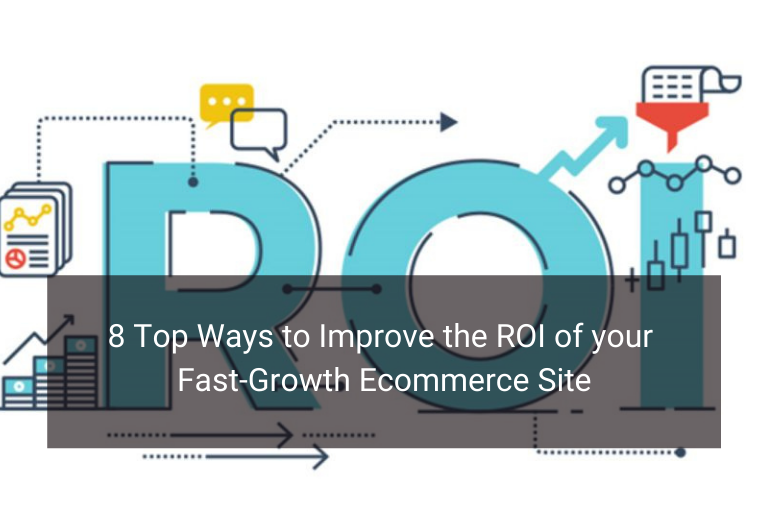The Return on Investment of your enterprise ecommerce website is the soul of the digital platform. It is the percentage of net profit achieved calculated over the investments done in the web development for your business.
Enhancing the ROI has been a major concern for all ecommerce platforms. To improve the ROI of ecommerce means identifying the key features that need to be integrated, enhanced, or eliminated from the website to bring greater returns to the business.
A study conducted by AppsFlyer and Facebook found the highest ROI for travel & shopping and least for free gaming apps. The total number of digital platforms used was 3800, which has generated $2.4 billion of revenue.
You may find it breathtaking but there are 24 million ecommerce websites serving consumers worldwide. However, only a few are renowned and make it big in the market. Seriously, how many do you know of except Amazon, eBay, and a few others you might have used once in a blue moon.
Many online stores fail and don’t even survive its year of introduction due to low ROI. Apart from exemplary customer service, there are various ways in which big and medium-sized enterprises can maximize the ROI of the website.
Before looking into the top 7 ways of enhancing ROI, have a quick look at its Formula.
Simple Formula for you to Calculate ROI
There are multiple ways of calculating ROI, but we will focus on one feasible for web development.
ROI is the percentage of return on investment over the total cost incurred in web development (i.e., the cost of investment) of your ecommerce platform.

Thus, if your web development has cost you a sum of $30,000 and you generate a revenue of $90,000, you end up pocketing a whopping 200% of ROI from the enterprise site.
Top 8 Ways to Improve ROI of Mid-Market Ecommerce Sites
1. Analyze & Optimize your Marketing Funnel

Your ecommerce platform conversion or marketing funnel has mainly four stages awareness, interest, decision, and conversion. The rate of conversion usually varies for anywhere between 2 to 10 percent for an unoptimized channel. It means out of every 1000 visitors, only 20 to 100 places an order.
Most potential clients leave the site as they traverse from the awareness stage to the conversion stage due to technical glitches, speed performance, inferior content, etc. For example, 68% of users prefer engaging content over boring content.Similarly, nearly 50% of users tap on alternatives when a website fails to launch within 2 seconds. An in-depth analysis to understand what is lacking in the platform and addressing them will enhance the UX of the site.
Using stock images and content makes your site appear just as one of the multiple options. While investing in unique content makes your platform stand out in the crowd boosting the sales and Roi of the enterprise’s site.
2. Clear Policies in View
ecommerce sites that lack or fail to inform about the firm’s policies often suffer from indigent client’s reviews affecting the brand’s reputation. It is best to stick to visible policies to avoid earning negative reviews from the clients.
Having a clear view of policies at the time of purchase helps the buyers make an informed decision, automatically reducing the probability of conflict between the business and your client.
3. Multiple Marketing Strategies
Multiple marketing strategies like SEO, SMO, Social media marketing, influencer outreach campaign, etc. need to be taken care of to ensure the website’s brand awareness to a greater audience.
Users have a tendency to buy products that appear at the top of the search engine. So, investing in search engine optimization is a must for you to gain visitors. You can have the content of your online store optimized to ensure high ranks on the search engine.
Similarly, it is best to ensure presence in social media platforms like FB, Instagram twitter, etc. as 2020 has already witnessed millions of social media downloads. The gross number of social media users stands at 3.6 billion in 2020, forecasted to reach 4.4 billion by 2025.
Influencer outreach campaigns can also get used to create brand awareness and boost sales of the ecommerce platform. A survey found that nearly 50% of customers rely on recommendations from influencers for purchasing a product. Increasing brand awareness and sales ultimately improves the ROI of the website.
4. Predictive Analytics as Machine Learning CRMs
Customer relationship management is essential to improve the ROI of the ecommerce site. For any medium-sized and big enterprise, the amount of data that gets generated regularly is relatively huge. CRM is crucial for offering an outstanding UX to visitors.
Unfortunately, handling so much data often leads to poor decisions unless relied on Machine Learning. ML CRMs lead to informed decisions by analyzing the previous choices, data, and outcomes.
Predictive lead scoring, a standard tool of Predictive analytics, categorizes leads into qualifying and unqualifying nature. It enables targeting the right audience for a product or service. Furthermore, with ML CRMs, you can conveniently manage personalized experience for the clients.
5. Invest in AR and VR

The world is already witnessing AR (Augmented Reality) and VR (Virtual Reality) in daily life applications. The technology fills the user with a sense of excitement for a product and service. You can use this technology for more significant goals and improve the ROI of the ecommerce platform.
For example, Lenskart, an ecommerce website for selling spectacles, comes with a ‘3D Try On’ feature, allowing users to check how a frame looks on him/her. The user mainly needs to enable the access of the camera to the site to try this feature.
Similarly, Sephora, a French multinational retail firm, allows clients to try lipstick, eyeshadows, etc. via ‘Virtual Artist,’ an AR tool used for the firm.
Simple, innovative features relating to AR and VR can significantly boost your sales to improve the ROI of the ecommerce site.
6. Ensure zero hindrance for the Clients
A user visits your website, taps over a few icons, and the pop-ups come asking to sign up. Chances are high; the user will tap on your competitors’ site, which doesn’t offer hindrance in online window shopping.
Big ecommerce companies like Amazon allow a user to keep on scrolling products and learn about its features and reviews from previous customer ratings with great freedom. This pattern of window shopping enables visitors to bond with your site.
Your ecommerce platform is a virtual store, and any form of hindrance can lead to loss of conversion of the leads. The site should ask for signing up only after the user places an object in the cart. It should be crisp, too, by asking only essential details from the users.
7. Develop User-Oriented Features
The site must allow an intuitive flow for the users depending upon the business model, whether B2B or B2C. Multiple features must be available to ensure a smooth experience for the users.
For example, geo-location services to automatically detect a user’s delivery address saves the time of the buyer. If your website offers customization of products, then it must have simple and easy forms for users to fill and proceed for the final order.
Some other essential features include quick connectivity with the customer service team in case of confusion, push-up notifications, text messages reminding the user about a delivery to occur, etc.
Having them on your platform enhances the user experience and ROI of the ecommerce website.
8. Offer Multiple Channels of Secured Payment
Your shopping cart deals with the client’s data, and a high level of security is a must for the platform. The popular search engine of Google tends to warn users of pages that lack SSL certifications.
A warning from the search engine is enough for users to avoid your online store. Hence, the platform must be secured to prevent any form of the data breach. With 47% of a data breach occurring with personal data of the clients, security should not be compromised at all.
Multiple options of secured payment in cards, mobile banking, and e-wallets must be available to complete the payment process conveniently. Lack of convenient payment options often leads to loss of leads at the final moments of conversion, affecting the ROI of the enterprise website.
Final Words
The ROI of an ecommerce site must be improved to optimum levels for more significant gains. A firm needs to focus on offering a great user experience to the site’s visitors to enhance ROI.
Ecommerce web development companies in India can customize your site to suit the target audience. They ensure to integrate and enhance essential features needed for your enterprise site to improve the ROI of your business.

Ready To Upgrade Your Logistic Solution?
Speak to Floship ecommerce logistic consultant about improving your global support chain today





